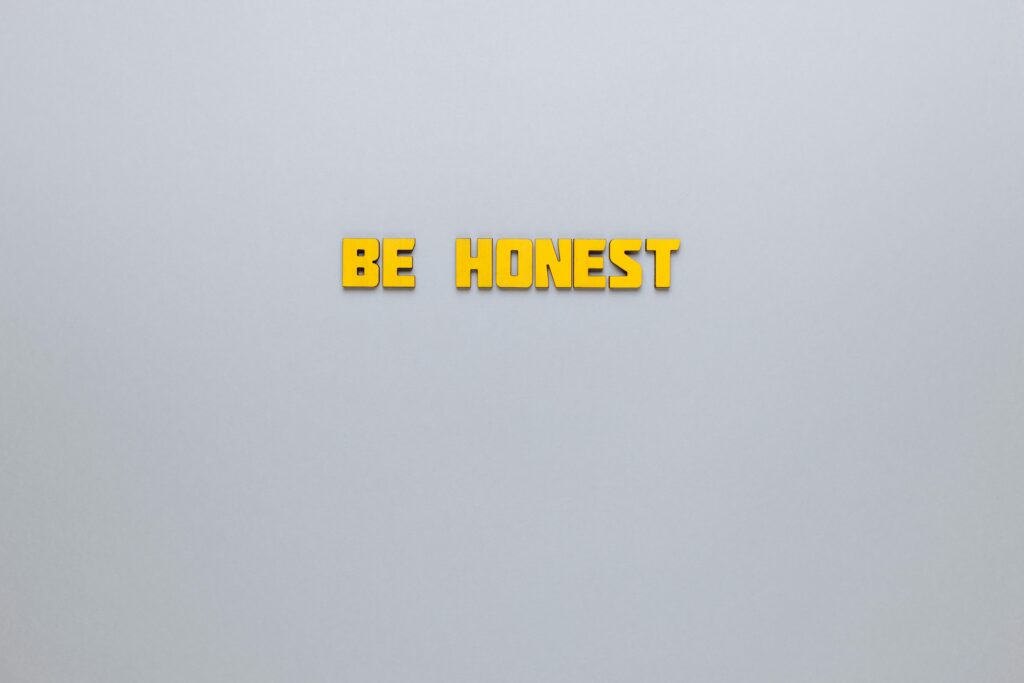I spent seven or so years as a cannabis news reporter and copywriter. The unique blend of media and branding work has allowed me to see the industry from a hybrid perspective.
Whether working with or reporting about brands and individuals, I’ve been repeatedly blown away by the talent and creativity coming out of the sector. But that only sometimes carries over to media and public relations. That’s where the disconnect often happens.
If you need help landing cannabis news placement for yourself or your brand, consider the tips I’ve picked up over half a decade of working in the industry.
Do You Really Know Your Product or Subject Enough?
Everybody wants to assert themselves as a thought leader. It’s a goal shared by numerous people over ages, long before we have tried to get cannabis legalized–or before it was ever made illegal in the first place.
It’s a reasonable goal and admirable in many ways. But to get there, you must be knowledgeable in the field, even a leader.
Sure, some of us can fake it ’til we make it up to a certain point. But for the most part, you’ll hit your ceiling sooner than later.
It’s best to steer clear of presenting yourself as an expert without actually being one. Common sense, right? Yet, still, a lot of people do it–possibly even some of your favorite personalities and figures. And that certainly isn’t limited to cannabis.
There’s no shame in taking your time and leveling up before getting to an expert level. But, with most brands looking to land clients or spread market awareness, tons are skipping on doing the work. It’s tempting to do the same. But often, it won’t pay off in the long run. You will get found out or dropped from most reporters’ list of go-to sources on said subject. Put in the work. Learn and experience the subject before calling yourself an expert or leader in the field.
And here’s the thing: You don’t always need to be an expert to get featured.
You can land media opportunities by being transparent about your credentials and what makes you uniquely interesting or informative.
Treat your pitches like your brand: What’s the value prop?
But, no matter how you approach it, know the product or subject before you step out into the media. You can get one by on some publications and get placement a few times. But you’ll get found out sooner than later.
Be Honest

Before diving into this one…
It may seem crazy in today’s media landscape to say honesty is the best policy. But, unless you’re the rare breed that can thrive off lies and media manipulation, stick with honesty. And even then, for society’s sake, don’t lie to the media, even though it can seem beneficial these days.
We all want to be the best. It’s only fair that we strive for our place at the top.
I remember putting out my second book, The Art of Marijuana Etiquette, back in 2021. A buddy of mine suggested promoting that it became the #1 book in some Amazon category that made no sense. It was religious studies or something like that.
Having an Amazon #1 seller to my name felt incredible. But I couldn’t see myself seriously embracing this as a milestone. It’d be like bragging about dunking on a four foot rim.
I can only imagine how much more product developers and brand heads desire to be #1. Market superiority is critical to success and longevity, especially in saturated sectors.
And as we all have seen over the years, from politics to desperate dudes on dating apps, everyone likes to exaggerate about being the best. It’s only natural to overstate when trying to stand out. It even works sometimes.
Like my last point, you can BS your way through to some degree. But at some point, someone will call you out. It’ll happen much quicker if you make ludicrous claims.
For many years, cannabis brands and their publicists would constantly send press releases claiming to be the number one cannabis brand. They’d use some of the most hyperspecific figures you could find to get there. I can’t recall just how many press releases I saw with headlines about “The #1 selling brand in Florida to men aged 34 to 35 in Southern Miami on Wednesdays” or something like that.
It was all in a quest to be the best at anything. Thankfully the trend of making such claims has died down significantly in recent years. But the desire to be the best, or at least seem to be, will always stay in style. And go for it if you can rightfully hold the claim. But if you’re stretching or lying outright, the media will eventually see through the lies.
Don’t Invite Media Somewhere You Don’t Want Publicized

Look, I know you want media coverage. But consider the possible consequences before getting involved with the news.
Unless dealing with an unethical reporter or outlet, we’ll report what happened as it happened. That can be damning in the developing cannabis space, where state and federal laws can still sink someone.
Some think it’s a massively corrupt sector, but from my experience, media professionals are ethical, and by the book. You don’t get room to request that we change the facts–even if we’re friends when off the clock.
It’s rare, but I’ve had cannabis brands and leaders ask me to change facts in published news stories. Over the years, a few cannabis brands have asked me to change details about attendees, event locations and other essential information. These requests were made despite the reporting being accurate.
I get the concern brands have–worrying that a cannabis news story, or any beat for that matter, could earn them severe consequences. But why aren’t you worrying beforehand? Is the allure of a digital media placement worth the potential city, state or federal crackdowns? In most cases, no, it’s not.
I’m not recommending you ban reporters or go back into the deep underground. But, I am saying be careful. Plan your media efforts with the same care you do for your company and products. This is especially true if you are a legacy or grey market brand.
Ask why are you seeking coverage? What’re the best-case results from this story running? What’s the worst?
“But you’re my friend,” you may think. “Can’t you hook us up,” you may ask? If so, whether you know it or not, you’re part of the problem. Ethical operators do not add further dishonesty into the conversation to spare themselves.
Public trust is at an all-time low across the board. Cannabis and news media are two massive sectors struggling with dishonesty. If you can’t handle having the actual location, attendees or other critical information shared in the news, don’t invite the media.
In some cases, you can discuss anonymity and privacy about certain aspects of your event. Discuss these beforehand, not after. Once it’s done and the media has seen it, it’s their job to tell the public what happened.
Or, you know, go find one of the few shady reporters every sector has. But please, don’t blabber on about honesty and transparency after you do.
Pitch Topics the Journalist and/or Outlet Covers
Cold email outreach was central to my early business growth. I think roughly 70% of my first 3 years of business came from such outreach to would-be clients and brands.
The work took time, but it paid off. Before reaching out, I’d go to great lengths to research the company. Before selling them on my services, I wanted to present them with a unique perspective highlighting my research, attention to detail and creative writing.
Without conducting this basic level of due diligence, I felt I’d immediately be seen as spam or an annoyance. I may still be seen as those things even when I send a personal message. But, when people passed, they thanked me for my effort. Some even followed up months later with work.
I know other companies have succeeded with cold outreach to varying degrees. Of those, many forget that core principle when pitching media.
Do some research before pitching or creating a media plan. You don’t need to butter up writers or publications. This isn’t pay-to-play, and you don’t need to start venturing into that territory by any means. But it would be good to research who you’re about to send stories to.
It may seem obvious, but many companies and brands will send out mass cold outreach pitches, hoping one or two will bite. This is an approach with a success rate I can only assume is comparable to robocall scams.
You may succeed with some major publication pick-up if you have a juicy enough story. But in most cases, spray-shotting the same generic pitch will result in little credible cannabis news coverage or placements. If you want to go this route, save time, spend a few bucks and just put out a press release.
Better yet, do the research. Read up on recent news that’s made their site’s front pages. Explore the writer’s byline. See what they have been covering as of late. You might want to read some of their articles–it’s always a great way to understand the writer’s tone. It may also give you a genuine icebreaker for your email.
It may take more work in preparation, but the effort should pay off. Those not up for the research should look into a PR firm that will handle these tasks. That is if you can afford them.
Be Unique…But Don’t Force It

There’s something to be said about first-market movers. In business, it may make or break a company. In media, first market movers are typically the stories and subjects covered by a reporter or outlet.
In most cases, other than current events, the media outlet or the journalist will not explore the same story within a relatively short span.
So what does that mean for your business?
Suppose you want a similar story or feature in a similar publication, or one done by a specific writer. If they’ve recently covered the topic, you might be in for a rough sale of yourself. Because that story has already been told, you aren’t likely to get an approval for the same style feature.
Unless there is a reason to highlight your company’s similar efforts, there has to be another angle to sell the story. I can’t count how many times brands have pitched the same story readers have seen countless times in publications.
I understand the rationale but look at it from the media outlet’s perspective–from the reader’s perspective, even more so. No one wants to read the same story over and over again.
I can’t tell you how many people have claimed to be number one in some hyper-specific category to get coverage. Another typical weak pitch has been the use of celebrity endorsers. That method does tend to get media coverage early on. Still, with the ROI looking unclear or unsuccessful, that story appeals to fewer outlets or readers.
Rather than compete in the saturated market where the same story has already been told, pitch something different. Look at what is being told and how your brand can tell it differently.
Improve Your Cannabis News Potential
Still trying to figure out where to start in cannabis news? Consider looking at what overlaps between the recent media coverage and your brand story. Then, explore what makes you stand out. It can be anything from your value prop to your founding story or company ethics.
If you are too deep into your brand story and need help deciding what to pitch, think about outsourcing for opinions. Consider consulting with journalists, editors, or former media professionals. Tap into their perspectives and see what is appealing. Try reaching out to the reporters and outlets before pitching–and respect those that tell you to bug off.
Looking to work on your content marketing or media pitches? Contact AWARD. We’re happy to give you a more in-depth look into solutions.




